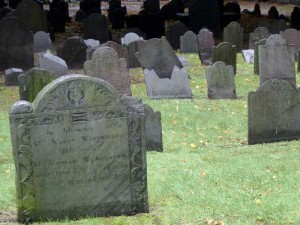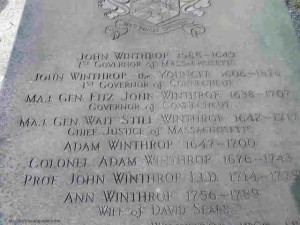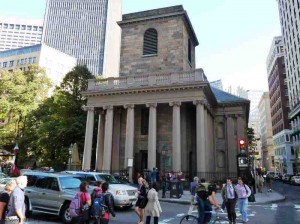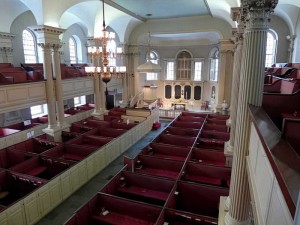Select your language to auto-translate:
Oldest Burying Ground in Boston
King’s Chapel Burying Ground is the final resting place for Boston’s earliest settlers including the family of William Dawes (the other rider on Paul Revere’s Midnight Ride) and John Winthrop (the Puritan leader at the founding of Boston in 1630 and the first governor).
Free
Open daily 9 – 5
Plan about 10-15 minutes to walk through
Background Information
King’s Chapel Burying Ground is Boston’s oldest. It was originally the vegetable garden of Sir Isaac Johnson, which also extended to the area surrounding Old City Hall (just behind the Chapel and Burying Ground). Sir Isaac died within a year of his arrival in Boston and was buried in the garden. It has no association with King’s Chapel, which was not built until 50 years after the Burying Ground was established.
There are many more people buried here than the headstones suggest – often they are buried four deep and sometimes standing up. Also, as with the other early Burying Grounds, the headstones have been moved into more orderly rows, so a headstone may not represent the actual burial site.
The burying ground was full by 1660, which means that none of the famous Revolutionary-era personalities are buried here.
There are, however, many internees who played important roles in Boston’s history. The most historically significant is the memorial for John Winthrop (1587 – 1649), who is buried along with his family. Winthrop was the leading figure in the founding of the Massachusetts Bay Colony (the trading company that owned the rights to the Massachusetts settlements). He led the Puritans’’ 1630 migration from England that led to Boston’s founding, and he was the first (and a twelve term) governor.
The oldest headstone here, and the oldest remaining in Boston, belongs to William Paddy, who died in 1658. The most famous stone, located just inside the entry gate, is that of Joseph Tapping, who died in 1678. Tapping’s headstone shows Father Time battling with a skeleton over the eventuality of death. Many consider this to be among the most beautiful in Boston.
You will also find the graves of Mary Chilton, who, according to legend, was the first Pilgrim to touch land in America., the family of William Dawes (the “other” rider on Paul Revere’s Ride), and Elizabeth Pain, who inspired Hester Prynne in Nathaniel Hawthorne’s “The Scarlet Letter.”
The ventilator shaft on the right side of the Burying Ground, close to King’s Chapel, dates from 1898. It is a relic of the first subway system built in America.


















